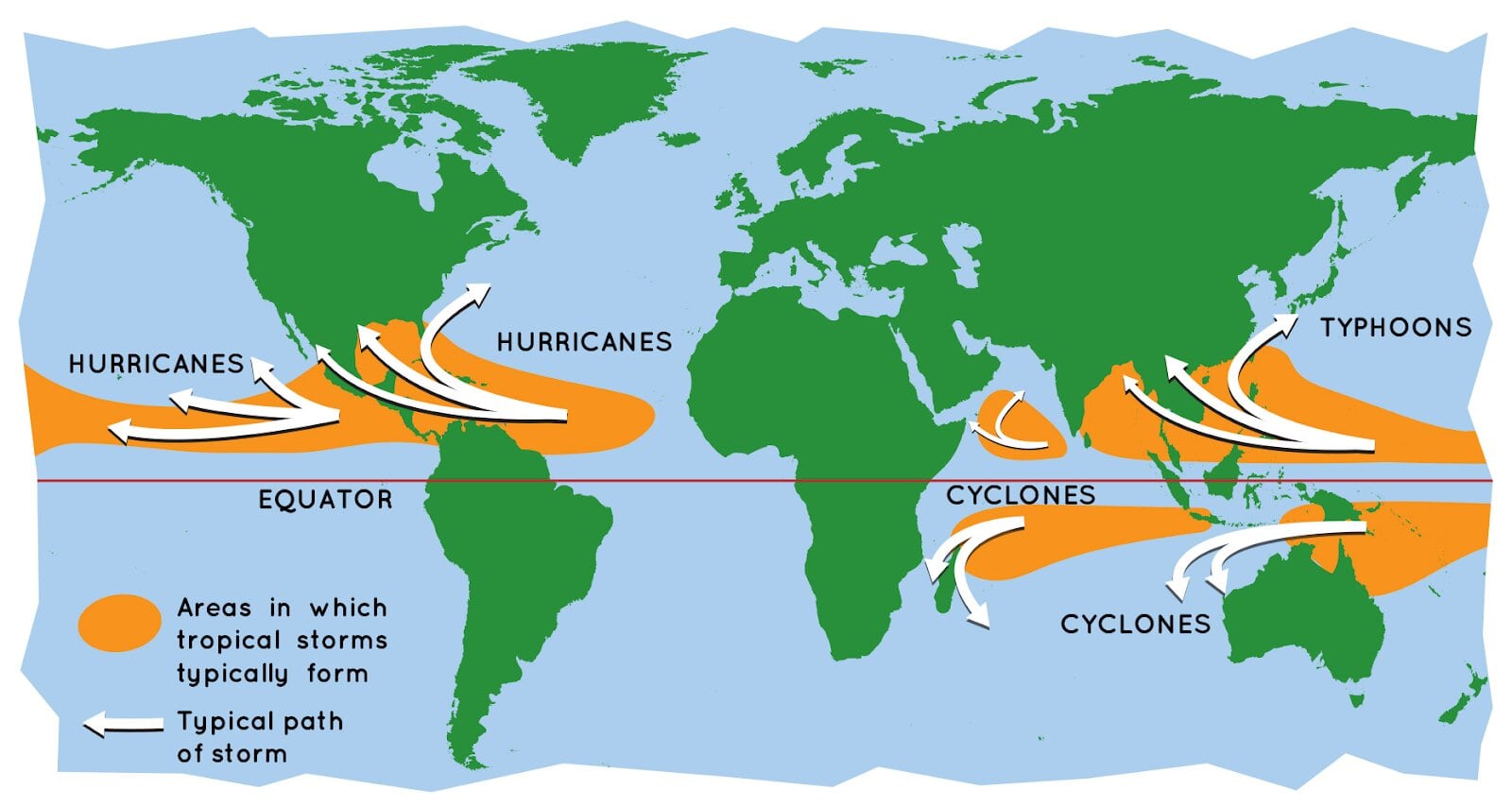Geography
Typhoon Maysak and Typhoon Haishen
- 10 Sep 2020
- 2 min read
Why in News
Recently, Korean Peninsula and Japan were hit by two typhoons named Maysak and Haishen.
Typhoons
- Typhoons are a kind of storm. The storms, depending on where they occur, may be called hurricanes, typhoons or cyclones.
- Typhoons: In the China Sea and Pacific Ocean.
- Hurricanes: In the West Indian islands in the Caribbean Sea and Atlantic Ocean.
- Tornados: In the Guinea lands of West Africa and southern USA.
- Willy-willies: In north-western Australia and
- Tropical Cyclones: In the Indian Ocean Region.
- The scientific name for all these kinds of storms is tropical cyclones.
- Tropical cyclones are intense circular storms that originate over the warm tropical oceans with speed more than 119 kilometres per hour and heavy rains.
Key Points
- Categorisation: Both typhoons were categorised as a Category 4 hurricane storm.
- A Category 4 storm has wind speeds between 130-156 mph and can uproot trees and bring down power lines.
- Hurricanes are categorized on the Saffir-Simpson Hurricane Wind Scale, which rates them on a scale of 1 to 5 based on wind speed. Hurricanes that reach category three or higher are classified as major hurricanes.
- Naming: The Maysak typhoon takes its name from a Cambodian word for a type of tree. While, Haishen means sea god in Chinese.
- Typhoon Maysak and Haishen are referred to as typhoon number 9 and 10 in Japan.
- Background of Naming:
- In Japan the first typhoon to occur after January 1st of the year is called typhoon number 1.
- In the USA, hurricanes are referred to by English names.
- The intergovernmental organisation called the Typhoon Committee which has 14 members including Japan, USA and China uses Asian names for typhoons that are contributed by the member countries.
- Haishen was a name recommended by China, while Maysak is a Combodian name.







